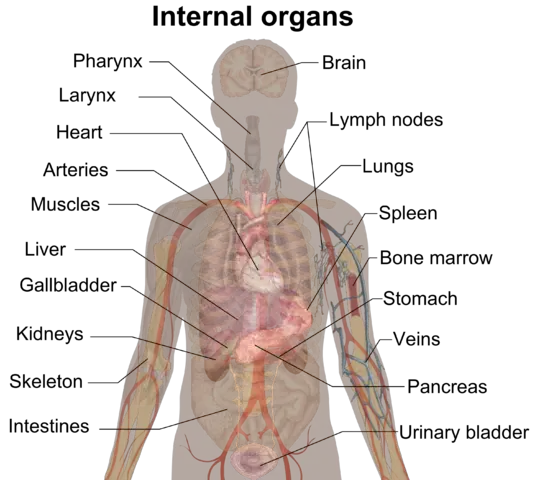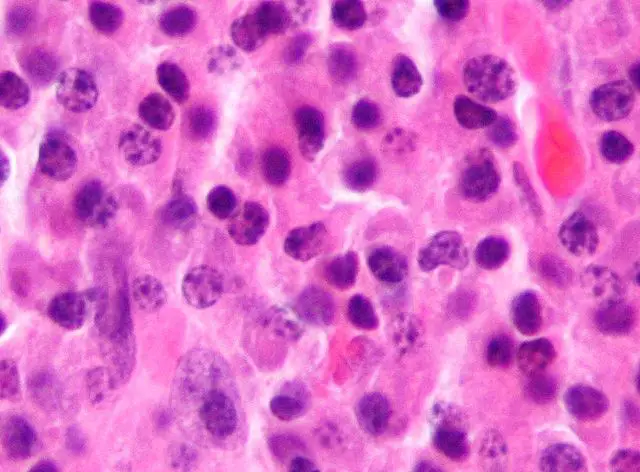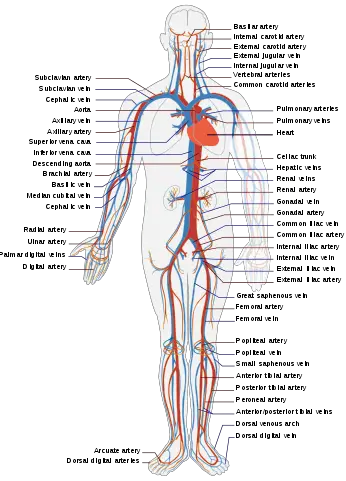The human body is a complex organism that is made up of trillions of microscopic cells that all work together to make you, you.
Each cell has a specific function and works with other cells allow your body to do all that you want it to do.

Cells, Tissue, and Organs
The basic building blocks of your body are cells, and there are trillions of them. This isn’t true for just you; cells are found in all living things.
There are over 200 different types of cells in the human body. Different cells come together to form tissue.
There are four different types of tissue in the human body: epithelial, muscle, connective, and nerve.
Epithelial tissue can be found throughout the body. This tissue covers your entire body and lines your body’s cavities – like your lungs. Epithelial tissue is also the major tissue in glands.
Muscle tissue are cells that allow your body to move. These special cells can expand and contract. Muscle tissue can be skeletal, smooth, or cardiac.
Connective tissue is what holds your body together. They support your organs, store fat, and protect you from disease. Compared to other tissues, connective tissues have very few actual cells. Instead, they are mostly a non-living material called intercellular matrix.
Nerve tissue allows these other tissues to communicate with each other. They are found in your brain, spinal cord, and nerves. Nerve tissue communicates by sending electrical impulses between cells.
When the cells in your body all have a similar function, we call that unit an organ. Organs can have multiple types of tissue within them. Some examples of organs are: heart, lungs, stomach, and skin.

The Systems
Several organs can join to complete complex tasks. This is called a system of the body.
There are ten major systems: skeletal, muscular, nervous, endocrine, cardiovascular, lymphatic, respiratory, digestive, urinary, and reproductive.
The skeletal system is made up of your bones, cartilage, tendons, and ligaments. It protects many of your organs and gives your body a frame.
The nervous system is what allows your body to communicate with itself. It also allows you to move, think, and feel emotions. The brain is the most important part of the nervous system.
The endocrine system oversees the overall balance of your body. It works with the nervous system to control your muscles and glands.
The cardiovascular system is also called the circulatory system. It sends blood throughout your body by using your heart.
The lymphatic system does three main jobs: it protects your body from disease, absorbs fat and vitamins from your stomach, and returns unused parts of blood to your cardiovascular system.

The respiratory system is what allows you to breathe. It also works with your cardiovascular system to send oxygen throughout your body.
The digestive system breaks down food into parts that your body can use. This system is made up of your mouth, stomach, intestines, and other organs.
The urinary system is also called the excretory system. It keeps track of the fluids in your body and is also responsible for ridding the body of waste.
The reproductive system is what allows humans to reproduce. This system is made up of specific organs that allow babies to be created, born, and cared for.
Interesting Facts:
- The average human body consists of over 100 trillion cells
- There are 206 bones in an adult human body
- Your skeleton makes up about 20% of your body weight
- The respiratory system also regulates your body’s pH balance
Human Body elements:
Explore a world of biology facts.